By Sarayu Ratnam
Dr. Ursula Storb, MD, is a Professor at the University of Chicago in the Department of Molecular Genetics and Cell Biology. She is also a faculty member of the Committees on Immunology, Cancer Biology and Developmental Biology.
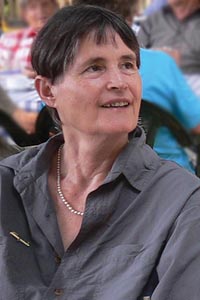 As a young girl Ursula wanted to study languages (she is proficient in German and English and familiar with French, Italian, Japanese, Swedish, Latin and Greek) but decided to pursue a medical degree instead, encouraged by her physician father who hoped she would meet a fellow student that she could marry and who in turn would take over his clinic! She went through an intense period of medical training at the Universitaet Tubingen, Germany, then Universities of Vienna, Austria and Freiburg, Germany to obtain her medical degree. A chance article in the journal Deutsche Medizinische Wochenschrift about how antibodies were made stoked her interest in immunology and she decided to pursue research at the Institut Pasteur, Paris on a NATO fellowship. This was followed by a year-long stint at the Institut d’Immuno-Biologie, Paris, France and the Institut fuer Haematologie, Freiburg, Germany on a EURATOM fellowship where she studied delayed hypersensitivity (now called T-cell immunity).
As a young girl Ursula wanted to study languages (she is proficient in German and English and familiar with French, Italian, Japanese, Swedish, Latin and Greek) but decided to pursue a medical degree instead, encouraged by her physician father who hoped she would meet a fellow student that she could marry and who in turn would take over his clinic! She went through an intense period of medical training at the Universitaet Tubingen, Germany, then Universities of Vienna, Austria and Freiburg, Germany to obtain her medical degree. A chance article in the journal Deutsche Medizinische Wochenschrift about how antibodies were made stoked her interest in immunology and she decided to pursue research at the Institut Pasteur, Paris on a NATO fellowship. This was followed by a year-long stint at the Institut d’Immuno-Biologie, Paris, France and the Institut fuer Haematologie, Freiburg, Germany on a EURATOM fellowship where she studied delayed hypersensitivity (now called T-cell immunity).
After her post graduate training in Europe Ursula turned down a job offer in pediatrics to experience the American system of research and continue her by now strong interest in immunology. She came to the USA on a fellowship from the German Government and joined the University of Washington, Department of Microbiology where she pioneered the “Rosette assay” to identify lymphocytes that carried antibodies on their cell membrane. Her lab, in collaboration with Ralph Brinster at the University of Pennsylvania, was also the first to show that mouse transgenes can function normally without the inclusion of viral enhancers. She progressed to being a Professor and Head of the division of Immunology, Department of Microbiology and Immunology, a position she held till 1986. She then joined the University of Chicago as Professor in the Department of Molecular Genetics and Cell Biology where she still continues.
At the University of Chicago, Ursula’s research has focused on the regulation of immunoglobulin gene rearrangement and hypermutation, and development of B-lymphocytes. Her lab was one of the first to identify the importance of transcription initiation to somatic hypermutation of immunoglobulin genes. Her lab also studies the role of DNA methylation and chromatin in development and Ig gene expression and recently identified a novel murine gene that causes specific methylation of a transgene during early development. She has more than 160 publications from her lab in various top-tier journals including Science and Cell. In addition, Ursula has extensive teaching experience where she has taught graduate and undergraduate courses in Immunology, Molecular Biology, Vertebrate Developmental Genetics, and Cell Biology
Ursula has won many professional honors including being elected Fellow of the American Academy of Arts and Sciences in 1992 and Fellow of the American Association for the Advancement of Science in 2007. She has also been an active member of various professional organizations including the Association of Women in Science since 1971. In fact, Ursula was present at the annual meeting of the Federation of American Societies for Experimental Biology (FASEB) when AWIS was founded.
As a female scientist during the past 50-odd years Ursula has seen her share of female prejudice in the scientific community. While applying for a faculty position she was told by her advisor that “she didn’t really need an independent position since she had a successful husband”! Ursula stuck to her guns and convinced him that she indeed deserved the faculty position with respect to her achievements in the academic field. She was also advised by another successful female scientist that “as a woman she may have to be many times better than a man to succeed”.
Recognizing the need to support women in science Ursula, during her long tenure as a scientist and teacher, has always been a strong mentor to the women students and researchers in her lab, and outside, irrespective of which stage in their career they are at. In 1993, she founded a faculty committee to support graduate students from under-represented ethnic minorities in science. She has had many female undergraduate students work in her lab and has introduced them to various different scientific projects which enable these young women to experience scientific “bench work” before they actually have to decide on a career. In most cases, the experiences in her lab have led these women to pick science as a career choice. To the graduate students and post-docs in her lab she has always been supportive and accessible and exposed them to various different aspects of science including planning basic science experiments, science writing and scientific presentations and thus preparing them for an independent scientific career. In addition, research has shown that the main reason why women are so under-represented in the STEM fields is because women are still responsible for the majority of housework and childcare activities even when working full time outside the house. Ursula understood the demands placed on a young mother at home, especially during the early years and has helped her post-docs remain in science by encouraging flexible work hours in her lab.
A workaholic by nature, Ursula spends most of her day at the lab focusing on research and teaching. Outside of the lab she enjoys discussing and appreciating science, art and music with her partner Dr. Terence Martin with whom she has also had a long and productive research collaboration and who has been one of the most influential persons in her life. Given that her career encompassed her greatest interest in life, science, Ursula has been one of the few to truly follow her passion and become one of the most successful female scientists today.

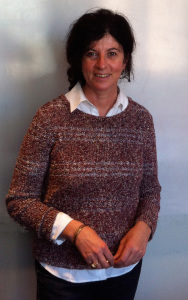
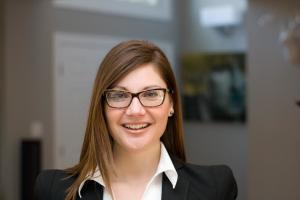
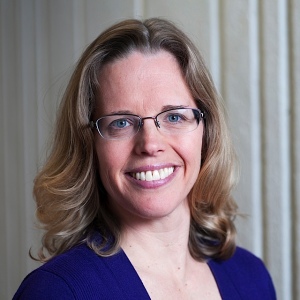



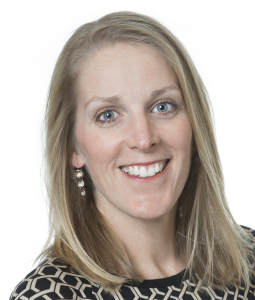
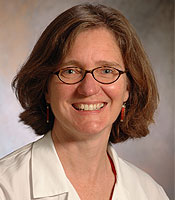
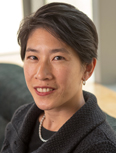 om has won numerous awards including the Materials Research Society (MRS) Outstanding Young Investigator Award and she was selected as “one of the world’s top young innovators” from the MIT Technology Review. Recently, she has been named as Executive Editor at American Chemistry Society (ACS) Photonics, which is a new journal focusing on photonic and plasmonic materials. Prof. Odom humbly mentioned that she has been fortunate to be on a fast-track in her career and is thrilled to take new leadership roles since there is always something to learn. Also it is clear she loves training graduate students and contributing to society by doing good science.
om has won numerous awards including the Materials Research Society (MRS) Outstanding Young Investigator Award and she was selected as “one of the world’s top young innovators” from the MIT Technology Review. Recently, she has been named as Executive Editor at American Chemistry Society (ACS) Photonics, which is a new journal focusing on photonic and plasmonic materials. Prof. Odom humbly mentioned that she has been fortunate to be on a fast-track in her career and is thrilled to take new leadership roles since there is always something to learn. Also it is clear she loves training graduate students and contributing to society by doing good science.